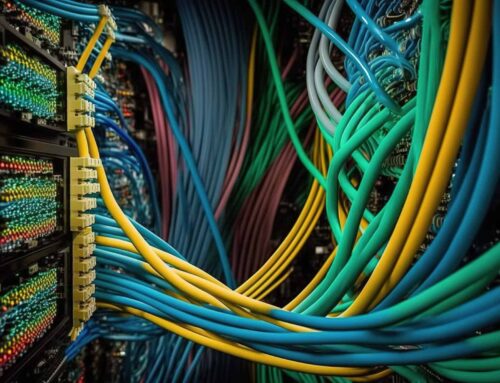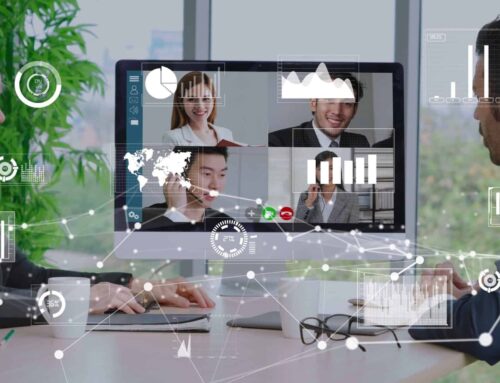Complete Guide To Security Posture Management

The world of cybersecurity is ever-changing, and new threats constantly emerging. One particularly crucial challenge for organizations today is maintaining a strong security posture. In this guide, we will provide an in-depth overview of security posture management (SPM), a critical aspect of any comprehensive security strategy. We will cover what SPM is, why it is important, how it works, and best practices for implementing it.
What is Security Posture Management?
Security Posture Management, or SPM, is a critical consideration for organizations. But, what exactly is it? Additionally, what is security posture? The U.S. Department of Commerce’s National Institute of Standards and Technology defines Security Posture as:
“security status of an enterprise’s networks, information, and systems based on information security resources (e.g., people, hardware, software, policies) and capabilities in place to manage the defense of the enterprise and to react as the situation changes.”
One way to think of security posturing is ensuring that your organization is in a good position, security-wise–able to detect and head off potential threats proactively.
Accordingly, security posture management is the management of an organization’s security posture. Security posture management involves establishing and maintaining procedures and practices that enable organizations to consistently maintain a safe security posture.
Some of the key capabilities of security posture management include:
- Network Discovery: the process through which an organization can identify all the devices on networks.
- Security protocol compliance and policy enforcement: Security posture management often involves and aids organizations in ensuring that unnecessary security risks do not occur in the first place.
- Reporting and remediation: Effective SPM can help organizations identify and remediate potential security threats or weaknesses.
Why is Security Posture Management Important?
Security posture management is a crucial consideration for organizations, especially those maintaining large digital systems. There are a number of reasons why security posture management is so important. These include the need to address common security risks, necessary compliance and regulatory considerations, and–importantly–protecting the ability of an organization to maintain operations and reputation.
- Addressing security risks: At the heart of a digital security management system is the aim to address and mitigate potential security threats to organizations. Security threats are all too common, and evolve quickly. As such, it’s essential that organizations take steps to identify, mitigate, and address common security risks.
- Compliance and regulatory requirements: Aside from ensuring that networks, devices, and other systems are compliant with internal security policy informed by industry-standard best practices, many organizations also must ensure that their networks, devices and systems remain compliant with regulatory requirements imposed by entities whose jurisdictions they operate within.
- Protecting business operations and reputation: Importantly, ensuring that security practices meet regulatory requirements and important standards and that networks devices and systems remain secure is an important component in protecting a business’s reputation and operations.
How Security Posture Management Works
As important as it is to understand what security posture management is, and why it’s so important for organizations such as businesses, it’s also important to understand how security posture management works, in application.
Security posture management involves several steps–including asset inventory and classification, vulnerability scanning and assessment, configuration management and assessment, and threat detection and response.
- Asset inventory and classification: This is the process of seeing what an organization has–identifying systems, devices, software, applications, subnetworks, data, and anything else considered an asset.
- Vulnerability scanning and assessment: This is the process of identifying potential threats and security vulnerabilities among the assets identified in the asset inventory and classification process. Common vulnerabilities might be things such as incorrectly configured hardware, software, or network infrastructure, out-of-date software or firmware, weak passwords, or open ports.
- Configuration management and assessment: This is the process of ensuring that all assets are configured properly, and making changes if needed should they not be. The aim of this step is ensuring that systems, devices, software, networks and any other assets are properly configured so as to eliminate potential security vulnerabilities.
- Threat detection and response: This is the process of identifying and responding to security threats within an organization’s system. Threats might include things such as DoS or DDoS attacks, malicious traffic, data breaches, and more. Threats can be addressed various ways–through means such as system quarantine, blocking suspicious traffic, or restoring compromised or corrupted data from backup systems.
Best Practices for Implementing Security Posture Management
In order to ensure that vital systems remain secure, it’s important to adhere to best practices when implementing and maintaining a security posture management system. These are some of the most important best practices:
- Define and prioritize assets: A crucial first step in security posture management is defining and prioritizing assets. This means identifying all assets, determining their value to the organization, as well as potential vulnerabilities, and prioritizing them accordingly.
- Establish policies and procedures: In order to maintain robust and consistent security practices, they must be outlined and standardized within the organization. This ensures that team members who can affect asset security are familiar with relevant policies to which they must remain compliant, as well as that there will be standard operating procedure around potentially vulnerable assets.
- Automate where possible: To the ends of consistency, automation can be incredibly helpful. Where security practices can be feasibly and reliably automated, increasing security, and reducing the risk of human error, they should be.
- Monitor continuously: Security posture management is not a one-time practice. Rather, it’s an ongoing process that must be maintained consistently over time. Security protocols should also be revisited periodically, and systems should be monitored as constantly as is practicable.
- Test and validate controls: Importantly, security controls need to be tested to ensure that they’re working properly and as intended as often as possible. This will help organizations ensure that security controls are effective and keep up with evolving potential security threats and vulnerabilities.
Challenges and Limitations of Security Posture Management
As important as security posture management is to enterprise security, it isn’t without its share of challenges. Organizations must face limitations and challenges when implementing and maintaining security posture management. Some of these include:
- Managing complexity: Especially in the case of large organizations, managing complex multilayered systems of security tools and security protocols can be a challenge. Organizations must contend with the challenge of ensuring that across even vast systems, security practices remain consistent and reliable among numerous assets and that assets are effectively defined, classified, prioritized, and tracked.
- Balancing automation and human oversight: Organizations must weigh the benefits of human oversight and automation and strike a balance between the two; while automation can help mitigate the risk of human error, human oversight and discretion are still essential to ensure that systems are working properly and to interpreting the effectiveness of security measures.
- Integrating with other security tools: As security can be a highly complex matter among digital systems, SPM tools will often need to be successfully integrated with other security tools.
- Addressing the human factor: While SPM often aims at creating systems that, under ideal conditions, will remain secure, humans are unpredictable and represent a unique vulnerability. Importantly, organizations must contend with the challenge of ensuring that employees and anyone else interacting with assets are trained, familiar with policy and procedure, and aware of the risk associated with misused or misconfigured assets.
Conclusion
Security posture management is essential in many organizations. Managing the security of vital and even nonvital assets is a crucial consideration for many organizations, and security posture management enables organizations to protect operations, their reputation, and valuable assets. SPM involves a range of processes designed to identify, prioritize, and ensure the security of important assets.
Importantly, organizations must consider how to best implement security posture management in order to ensure that practices are effective and adhere to industry standard best practices. This involves carefully taking steps to ensure that assets are defined and prioritized, policies and procedures are established and understood by relevant parties, actions are automated when applicable and feasible, systems and assets are continuously monitored, and controls are consistently tested and validated.
Cloud Security Posture Management, or CSPM is SPM among cloud-based systems and infrastructure. Whether in the case of cloud infrastructure, cloud PaaS, or cloud SaaS, it’s important that organizations ensure that assets are secure and protected. Through the implementation of CSPM, organizations are better able to utilize important cloud services while protecting valuable assets.
While nobody can predict the future, trends in digital technology can help us guess what trends we may see in the future in Security Posture Management. For example, as organizations increasingly adopt cloud-based solutions over on-premise solutions, CSPM may become increasingly important. The tools used to carry out security posture management also may look different, and automation may come to play an even greater role in security posture management. Novel means through which human oversight can be better integrated with wider automation also may be developed. As malicious efforts grow more sophisticated as technology evolves, security tools and practices will need to evolve as well in order to keep pace with an ever-changing landscape of security considerations.
About i.e.Smart Systems
i.e.Smart Systems is a Houston, TX based technology integration partner that specializes in design and installation of audio/visual technology and structured cabling. For more than three decades, our team of in-house experts has partnered with business owners, architectural firms, general contractors, construction managers, real estate developers, and designers in the Houston market, to deliver reliable, scalable solutions that align with their unique goals.




